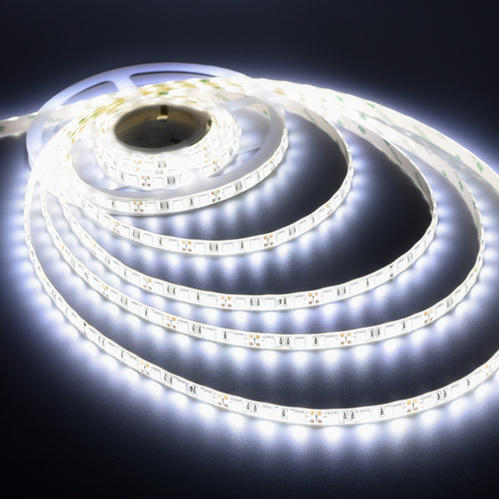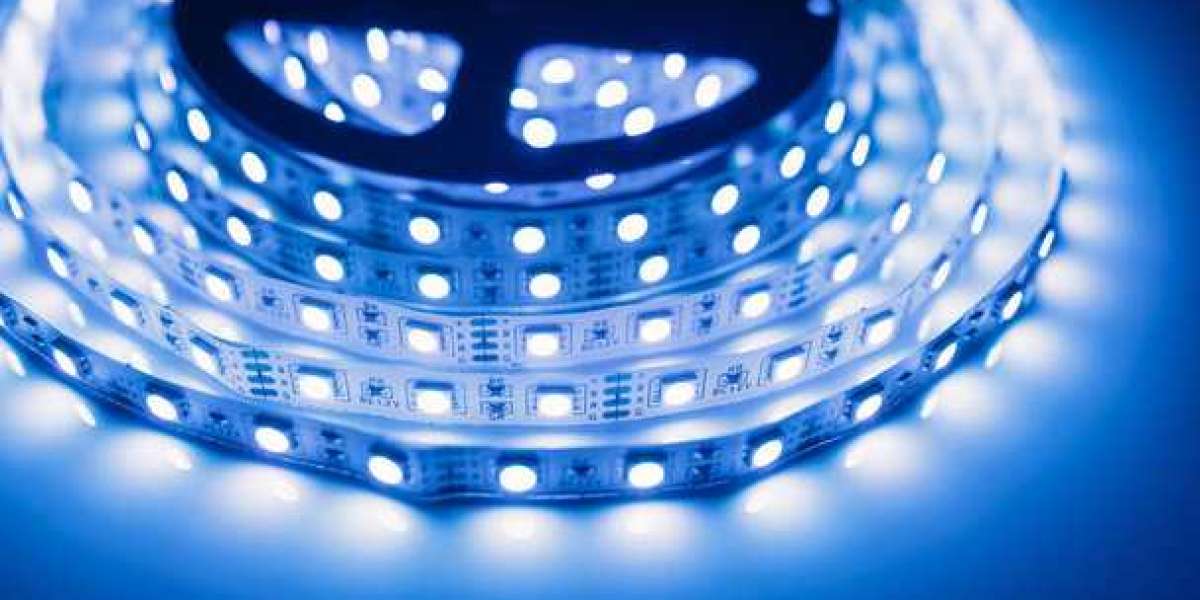How to Connect LED Strip Lights: A Step-by-Step Guide
Connecting LED strip lights together is an essential skill for anyone looking to maximize their functionality and create stunning lighting effects. Whether you want to extend the length of your best LED light strips, create unique shapes, or synchronize multiple strips, knowing how to connect them is crucial.
In this comprehensive guide, we will explore various methods and techniques to seamlessly connect LED strip lights, allowing you to unleash your creativity and customize your lighting setup to suit your needs.

Step 1: Choose the Right Connector
If you prefer to use connectors to connect your strip lights, follow these simple steps:
Ensure that you purchase the appropriate connector for your LED strips. It should have the required number of pins and the correct connector type for your specific setup (straight, angled for corners, or with a wire in between).
Open the LED light strip connector’s clips.
Make sure that the pins on the light strips touch those of the connector as you insert them.
Secure the connector clips to hold the two light strips in place.
Keep reading if you want to learn more about alternative connection techniques and important considerations for connecting strip lights.
Can LED Light Strips from Different Brands be Connected?
Yes, in most cases, LED light strips from different brands can be connected to one another as long as they have compatible connectors and voltage requirements. LED light strips usually come with connectors at the ends, allowing them to be easily linked together.
While the connectors may vary slightly between brands, many manufacturers use standard connector types such as the 4-pin RGB connectors or the 2-pin connectors for single-color strips. If the connectors are different, you may need to use adapter cables or connectors to make them compatible.
Read more: Cutting LED Light Strips: A Foolproof Guide
However, it’s important to check the specifications and requirements of each LED light strip to ensure they can be safely connected without causing any electrical issues. Additionally, keep in mind that LED light strips may have variations in color, brightness, or control protocols between different brands, so it’s wise to test the compatibility and functionality before undertaking large-scale installations.
Is Connecting Multiple Strip Lights Safe?
When it comes to safety, it is crucial to purchase high-quality certified products. Cheap LED strips connected in series can be fire hazards because of the heat they generate, especially when mounted on heat-sensitive materials like wood or plastic. Therefore, it’s essential to take safety precautions even when using authentic products. Consider the following when connecting multiple strip lights:
Be aware of the differences between the LED strips you are connecting. For example, a white LED strip consumes more power than an RGB LED strip, so they cannot share the same power source. Make sure the voltage of the power supply unit (PSU) matches the LED strip’s requirements (5VDC, 12V, or 24V).
To achieve the most energy-efficient method, consider placing a power supply on one corner of the ceiling and connecting two LED strips collectively to the power source. This will prevent voltage drops and ensure consistent lighting.
Before connecting multiple LED strips, prioritize safety and consider the most economical way to power your lights.
How to Connect Several LED Strip Lights Together
There are two main methods to connect LED strip lights: soldering and using connectors.
Soldering is a more advanced technique that requires soldering irons and the knowledge of connecting wires properly. It offers a more secure and efficient connection. However, if you prefer a simpler method, connectors are a great choice.
To connect LED strip lights using connectors, follow these steps:
Choose the right connector type based on your needs. There are various connector options available, such as straightforward connector clips, connectors with a cable in the middle, or connectors with a cable between the strip and the power supply unit.
Align the male and female ends of the connectors correctly. Ensure that the positive and negative terminals match up.
Insert the strip’s end into the designated clip area of the connector. Some connectors may require sliding or snapping the strip into place.
Check the alignment of the connectors and the strip setup. Although most clips are in line with the strip’s setup, it’s recommended to double-check.
Note: When connecting RGB LED strip lights, use connectors specifically designed for RGB strips. These connectors have four pins (R, G, B, and +/V+) to ensure the proper color and power connection. RGBW strips, which have a separate white chip, require connectors with five pins.
If you prefer to solder the connection, strip the insulation off the ends of the LED strip and the wires you want to connect. Solder the corresponding wires together, ensuring a secure connection. Insulate the soldered connections with electrical tape or heat shrink tubing.

Should LED Strips Be Connected in Series or Parallel?
The decision to connect led strip lights in series or parallel depends on your specific requirements.
In a series connection, the LED strips are directly connected end-to-end. The power supply is plugged into the first strip, and the voltage is divided among all the LEDs. While series connections maintain a constant current, the brightness may vary throughout the circuit. Additionally, if one strip fails, the entire circuit will stop working.
On the other hand, a parallel connection involves connecting each strip to the power source individually. Each strip receives a portion of the current, while the voltage remains constant. Although parallel connections are more challenging to install initially, if one strip fails, the others will continue to light up. However, the current will be altered, so it’s essential to consider the load balance.
For consistent lighting, a series connection is recommended, but it requires a high constant-current driver for longer connections. If a strip fails in a series connection, replacing the strip will restore the lighting.
Read more: How to Control RGB Strip Lights with Your Smartphone
In more complex circuits with numerous LEDs, a parallel connection can be more practical, as it allows the circuit to remain lit if one strip fails partially.
How Many LED Strip Lights Can I Chain Together?
The number of LED strip lights you can chain together depends on the wattage rating of your power supply and the total wattage of the LED strips.
To ensure optimal performance and avoid overloading, follow this general rule:
Divide the length of the strip you are powering by the watts per meter of your strip. The result will give you the number of meters you can power with your current power supply.
Choose a power supply with a rating approximately 20% higher than that number. This provides a safety margin and allows the power supply to handle the load effectively.
For example, if you have a 60W power supply, you can draw 54W from it after accounting for the 10% headroom. Then, calculate how many meters each strip consumes based on its wattage per foot. Divide the available power (54W) by the wattage per foot to determine the maximum number of strips you can connect together.
Keep in mind that the precise specifications of your LED strips and power supply will dictate the number of strips you can safely connect. Manufacturers generally recommend powering a maximum of 2 to 3 strips with a single power supply.
Considerations for Connecting LED Strips
Before you embark on your LED strip lighting project, keep the following considerations in mind:
Always use a power supply with a higher wattage rating than the total wattage of the LED strips you are connecting. This ensures that you avoid voltage drops that can cause dimming or flickering.
Cut LED strip lights only from the designated cutting points spaced along the strip. Avoid cutting in between these points, as it may result in malfunctioning LEDs.
Protect the connectors by covering them with suitable heat shrink tubing or insulating tape for either indoor or outdoor use.
Ensure the positive and negative terminals of the connector match the LED strip’s positive and negative terminals.
When connecting RGB LED strips, make sure the colored wires match the connection dots labeled R, G, B, and 12V.
By following these considerations, you can ensure a secure and reliable connection when connecting LED strip lights.

Conclusion
Knowing how to connect LED strip lights empowers you to create customized and captivating lighting designs. With the step-by-step methods discussed in this guide, you can easily extend the length of your led lights room, create unique shapes, and synchronize multiple strips to achieve visually stunning lighting displays.
Whether you choose soldering techniques, connectors, or wireless solutions, the process of connecting LED strip lights is accessible and allows you to unleash your creativity.
So, armed with the knowledge and instructions provided here, dive into the world of LED strip light connections and transform your space with mesmerizing and personalized lighting effects. Get ready to explore the endless possibilities that await you as you connect LED strip lights together.
FAQ
How do I ensure a secure and reliable connection when connecting LED strip lights?
To ensure a secure and reliable connection when connecting LED strip lights, follow these steps:
Choose high-quality connectors specifically designed for LED strip lights. Look for connectors that provide a tight and secure connection.
Clean the connection area by removing any dust, dirt, or debris that may interfere with the connection on both the LED strips and the connectors.
Properly align the connectors, ensuring that the positive and negative terminals match up correctly.
Insert the connectors fully, pushing them together firmly until they are fully engaged. Ensure that the pins or contacts are securely connected.
Depending on the type of connectors used, follow the manufacturer’s instructions to secure the connection. This may involve tightening screws, applying adhesive, or using heat shrink tubing.
Test the connection by turning on the power and checking that all the LED lights are functioning properly without flickering or dim sections.
If needed, provide additional support to the connection points for long LED strips or areas with movement or vibration. This can be done using mounting clips, adhesive tape, or cable management solutions.
Can I extend the length of LED strip lights by connecting them together?
Yes, you can extend the length of LED strip lights by connecting them together. LED strip lights often have designated connection points that allow for easy extension. Here’s how you can extend the length of LED strip lights:
Measure and cut the LED strip lights to the desired length. Most LED strip lights have marked cutting points where you can safely trim them using scissors or a cutting tool.
Prepare the extension connectors by acquiring additional LED strip light segments that match the type and specifications of your existing LED strip lights. Ensure that the extension strips have the same voltage and color type as your existing LED strips (e.g., RGB or single-color).
Connect the extension strips by aligning the designated connection points on both the original LED strip lights and the extension strips. Insert the male and female ends of the connectors securely. Depending on the connectors used, you may need to slide or snap them together.
Securely fasten the connectors to hold the connection in place. Follow the manufacturer’s instructions for the specific type of connectors you are using.
Test the connection by powering on the LED strip lights and checking that all the LEDs are functioning properly. Look for any flickering or dim sections, which could indicate a loose or faulty connection.
Mount the extended LED strip lights in the desired location using adhesive backing or mounting brackets, following the manufacturer’s instructions.
Can I cut and reconnect LED strip lights to fit different lengths?
Yes, you can cut and reconnect LED strip lights to fit different lengths. LED strip lights often have designated cutting points, allowing you to trim them to the desired length. Here’s how you can cut and reconnect LED strip lights:
Determine the desired length of the LED strip lights and locate the cutting points. LED strip lights usually have marked cutting points indicated by scissor or scissor symbol icons.
Carefully cut along the cutting points using scissors or a cutting tool, following the manufacturer’s instructions to avoid damaging the LED chips or circuitry.
After cutting, you will need to reconnect the LED strip lights to fit the desired length. This can be done using connectors specifically designed for LED strips or by soldering wires.
When using connectors, make sure they are compatible with your LED strip lights. Align the male and female ends of the connectors, and insert them securely. Depending on the connectors used, you may need to slide or snap them together.
If soldering, strip the insulation off the ends of the cut LED strip lights and the wires you want to use for reconnection. Solder the corresponding wires together, ensuring a secure connection. Insulate the soldered connections with electrical tape or heat shrink tubing.
Test the reconnection by powering on the LED strip lights and checking that all the LEDs are functioning properly. Look for any flickering or dim sections, which could indicate a loose or faulty connection.
Mount the cut and reconnected LED strip lights in the desired location using adhesive backing or mounting brackets, following the manufacturer’s instructions.
Are there specific connectors for RGB LED strip lights?
Yes, there are specific connectors designed for RGB LED strip lights. RGB LED strip lights have three channels (red, green, and blue) that allow for color mixing and the creation of a wide range of colors. Here are some common types of connectors used for RGB LED strip lights:
4-pin RGB connectors: These connectors are designed specifically for RGB LED strip lights. They have four pins or contacts, usually labeled as R, G, B, and + or V+ (positive voltage). These connectors ensure the proper connection of the three color channels and the power supply.
4-pin extension connectors: These connectors allow you to extend the length of your RGB LED strip lights while maintaining the color and power connection. They have male and female ends with four pins to match the RGB channels and the power supply.
4-pin corner connectors: If you need to make a corner or turn with your RGB LED strip lights, these connectors come in handy. They allow you to change the direction of the strip while maintaining the proper connection between the RGB channels and the power supply.
RGB wire connectors: In some cases, you may need to connect wires directly to the RGB LED strip lights. RGB wire connectors provide a secure and reliable connection between the strip lights and the wires, allowing you to extend or customize your RGB lighting setup.
It’s important to ensure that the connectors you choose are compatible with the specific type of RGB LED strip lights you have. Manufacturers often provide connectors and accessories specifically designed for their RGB LED strip light products. Refer to the manufacturer’s instructions or consult with a supplier to find the appropriate connectors for your RGB LED strip lights.







